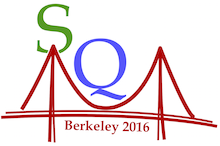Speaker
Viktor Begun
(Jan Kochanowski University)
Description
New results of the NA61/SHINE Collaboration at the CERN SPS on mean hadron multiplicities in proton-proton interactions are analyzed within the transport models and the hadron resonance gas (HRG) statistical model. The chemical freeze-out parameters in p+p interactions and central Pb+Pb or Au+Au (A+A) collisions are found and compared with each other in the range of the center of mass energy of the nucleon pair $\sqrt{s_{NN}}$ = 3.2−17.3 GeV. The canonical ensemble formulation of the HRG model is used to describe mean hadron multiplicities in p+p interactions and the grand canonical ensemble in central A+A collisions. The chemical freeze-out temperatures in p+p interactions are found to be larger than the corresponding temperatures in central A+A collisions. The largest difference is at small collision energies, because temperature in p+p mildly decreases, while in A+A it drops almost to zero when collision energy decreases, following the famous freeze-out line. The updated NA49 data at the SPS suggest a different freeze-out line for A+A collisions, which implies T=157 MeV at the LHC, similar to the HRG fits to the data at the LHC, see arXiv:1512.08025 for details.
Author
Viktor Begun
(Jan Kochanowski University)
Co-authors
Prof.
Mark Gorenstein
(Bogolyubov Institute for Theoretical Physics)
Mr
Volodymyr Vovchenko
(Frankfurt Institute for Advanced Studies)
